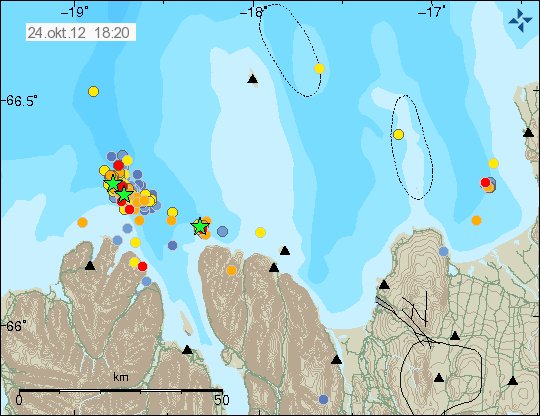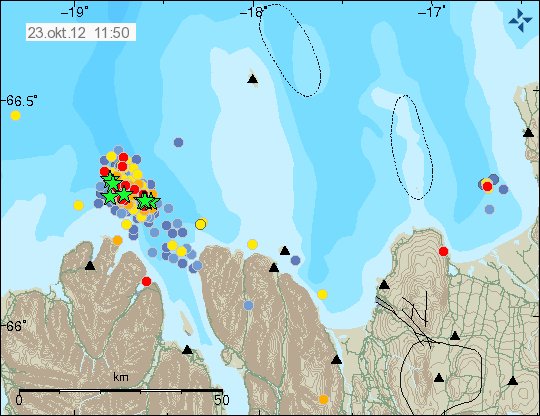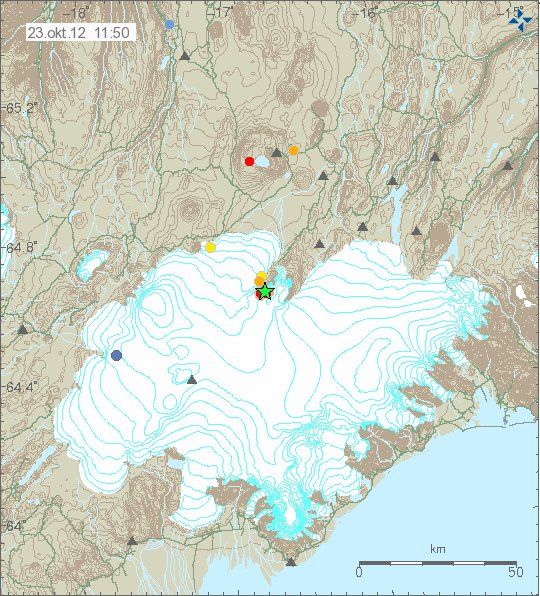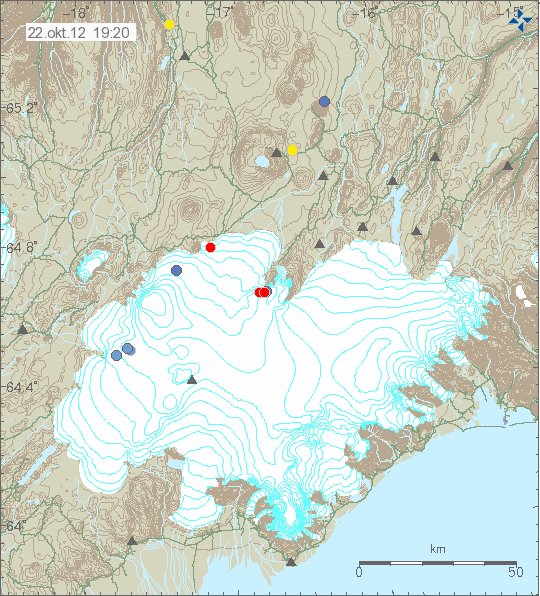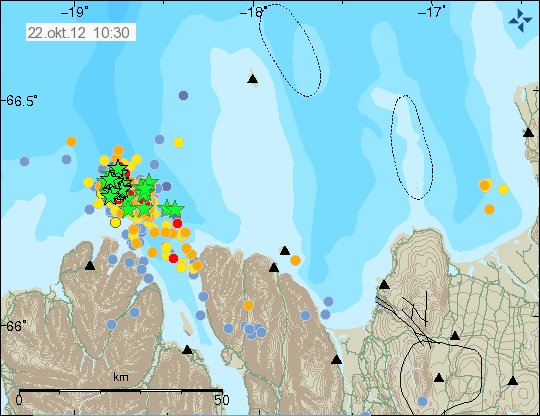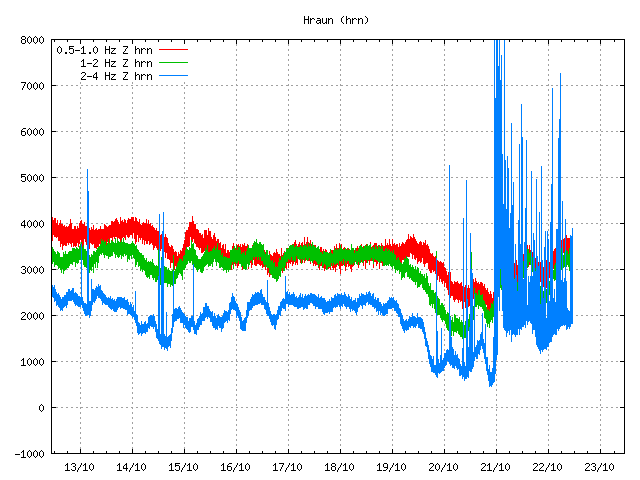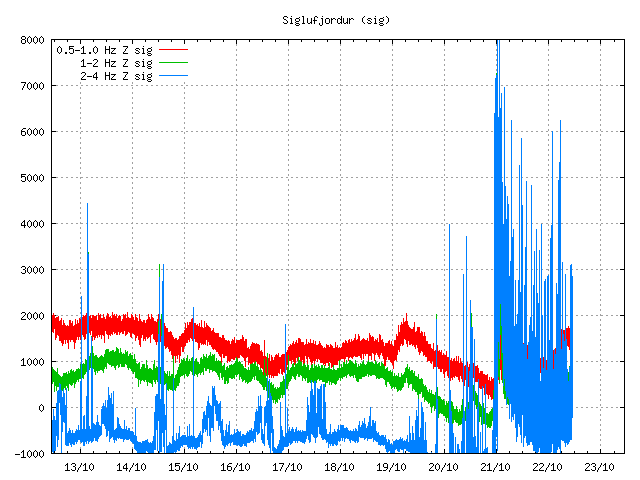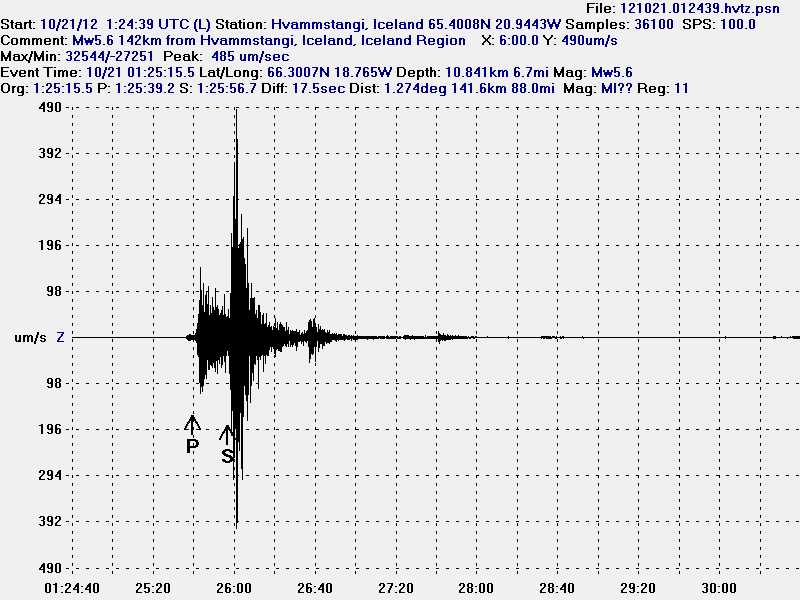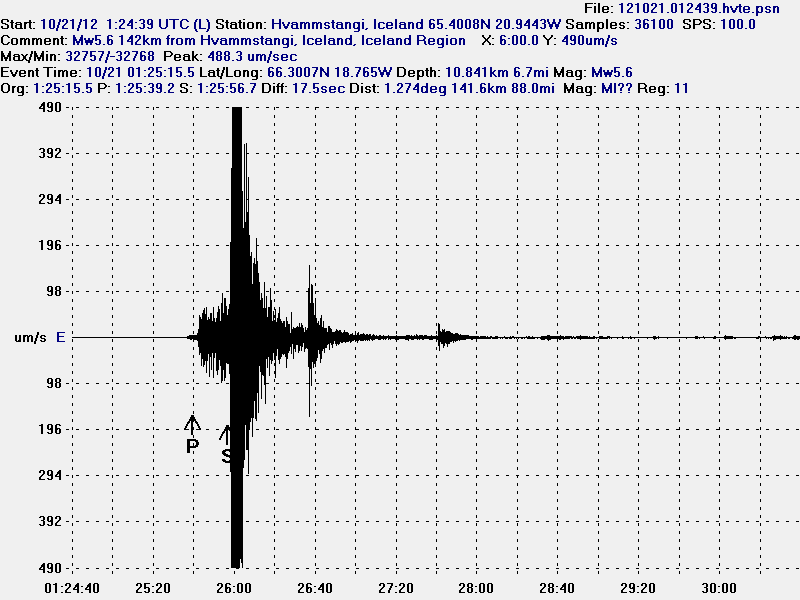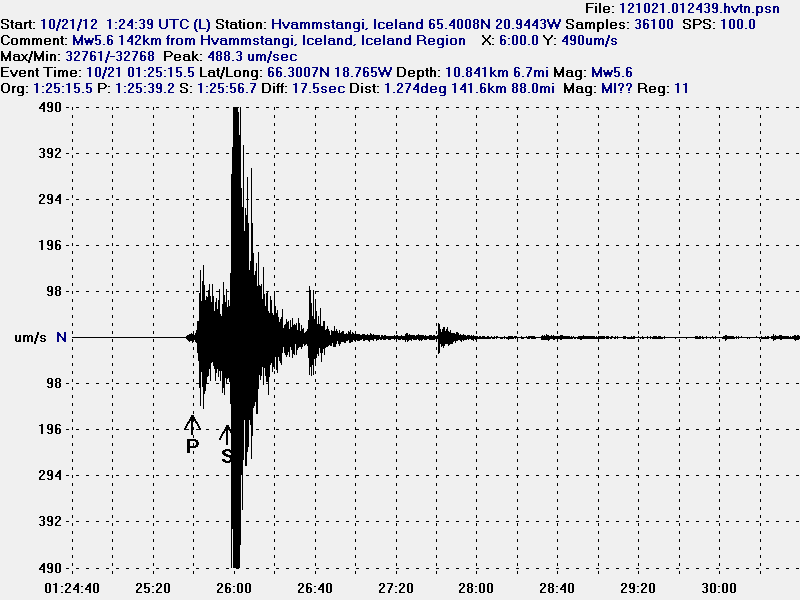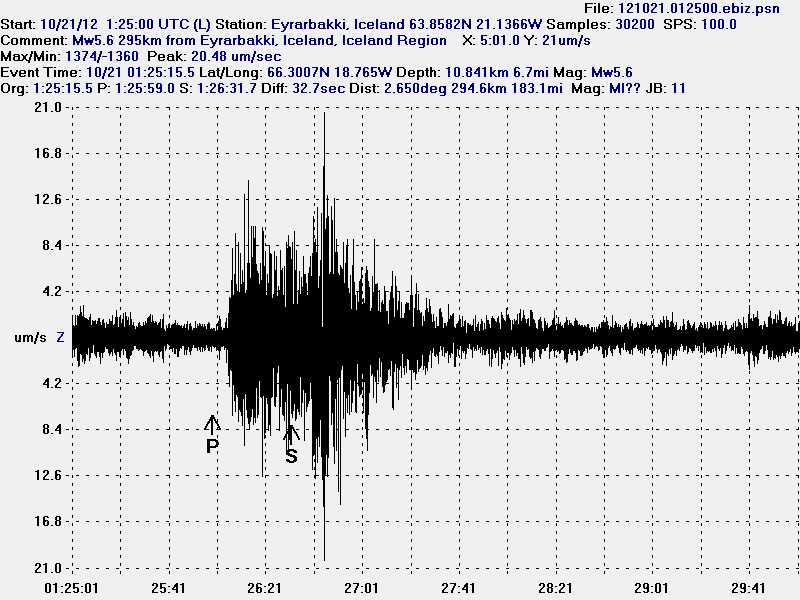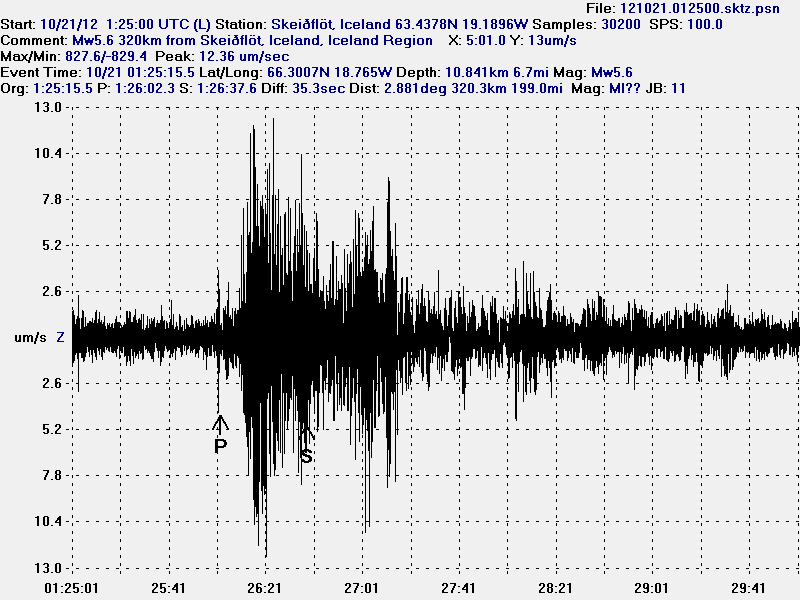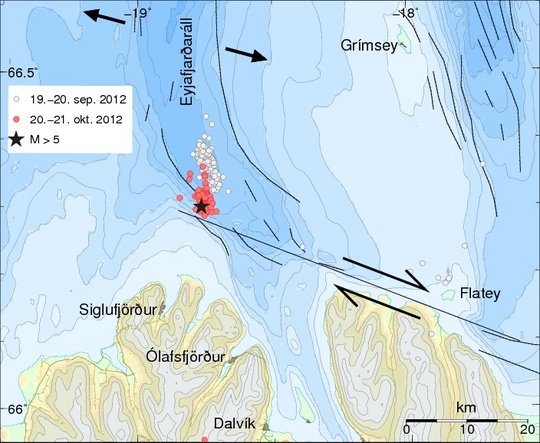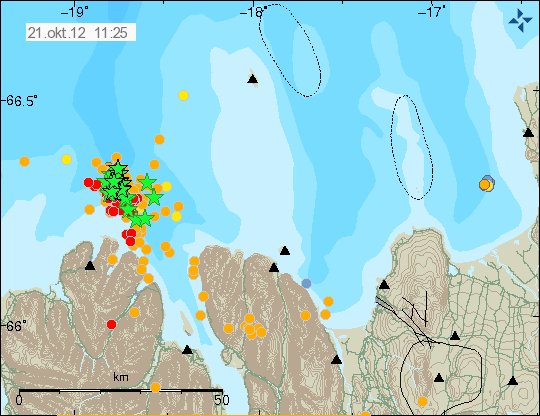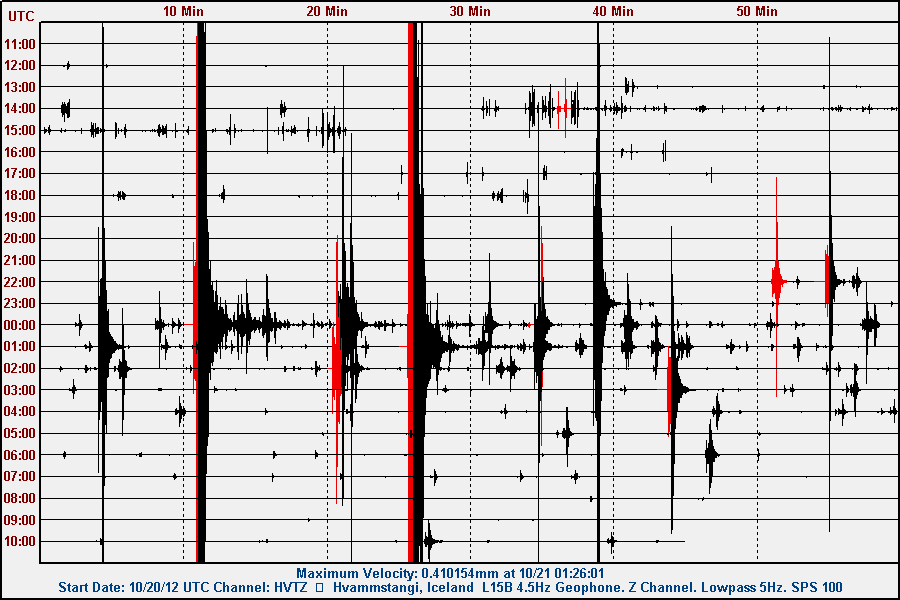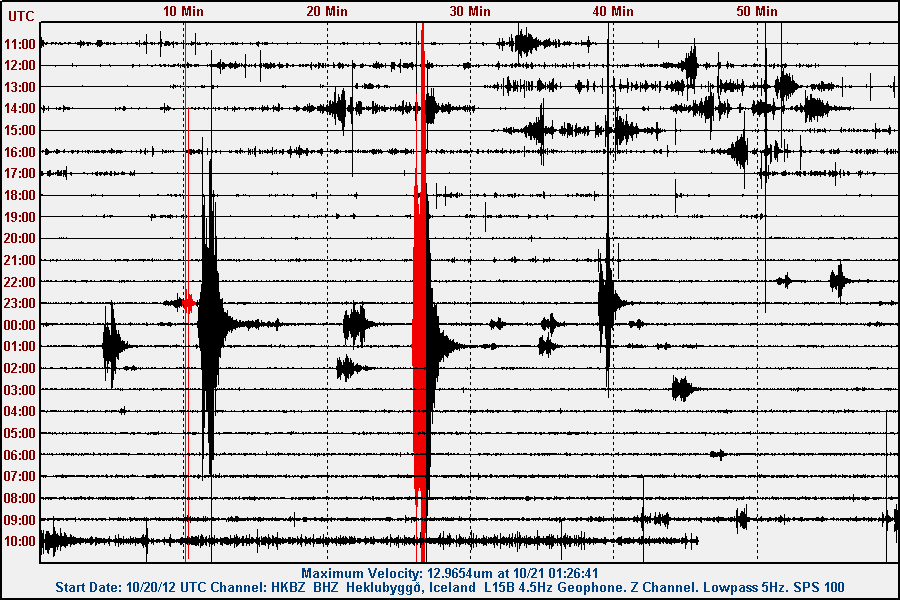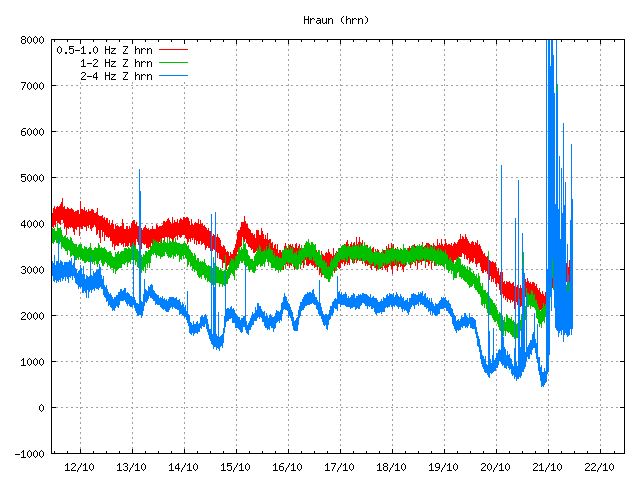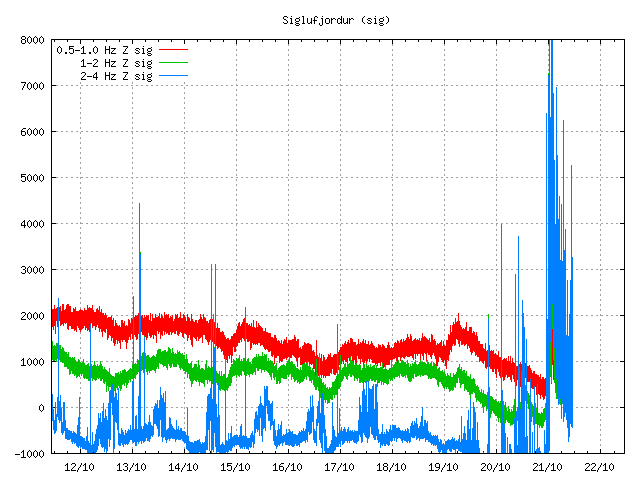The earthquake activity in TFZ continues today, as it has done so for the past six days. Yesterday there was little change in earthquake activity in TFZ. General alert for the risk of earthquake larger then Mw6.0 is still in place and is going to remain in place for at least few more days.
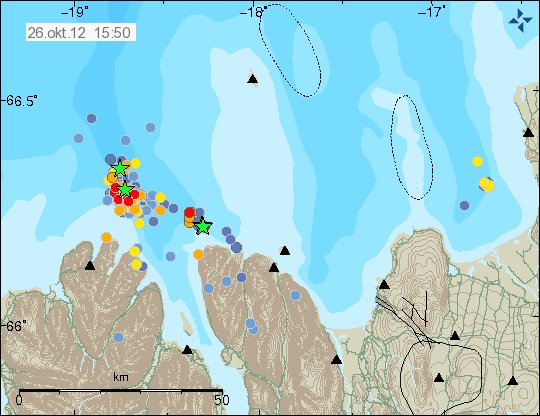
The earthquake activity in TFZ on 26.10.2012. Copyright of this image belongs to Icelandic Meteorological Office.
It is impossible to know for sure what happens next in TFZ. But the stress is high in this area of Iceland according to GPS measurements. As some of the fault lines in TFZ are locked in place, while the whole system remains on the move otherwise. This builds up stress levels on the fault lines that are locked and unable to move in accordance with other tectonic movements in the area. This lock is then released in large earthquakes in TFZ that happen once to twice a century in this area. Now it is possible that it is time for new large earthquake in this area. But when is impossible to know for sure at the moment.
Some rock collapse has happened following the Mw5.6 earthquake on TFZ. This has been reported in local news media in Skagafjörður.
Icelandic news of rock collapse
Hrun í kjölfar skjálfta (Icelandic, pictures) Note that second picture is from the year 2006. The newest picture is the smaller frame and shows two blocks of rock that is at least 80 to 200 tons that broke loose in the largest earthquake on 20.10.2012.
Update 1: Icelandic Meteorological Office has issued this information this earthquake swarm. It can be found here on there web page.
Blog post updated at 20:59 UTC on 26.10.2012

